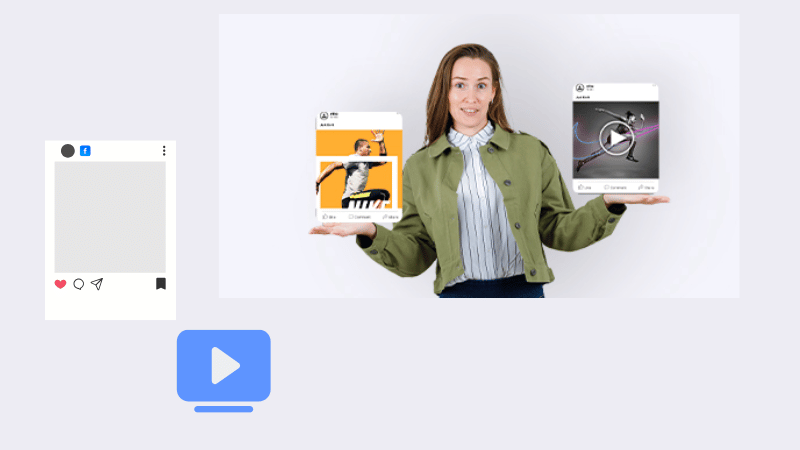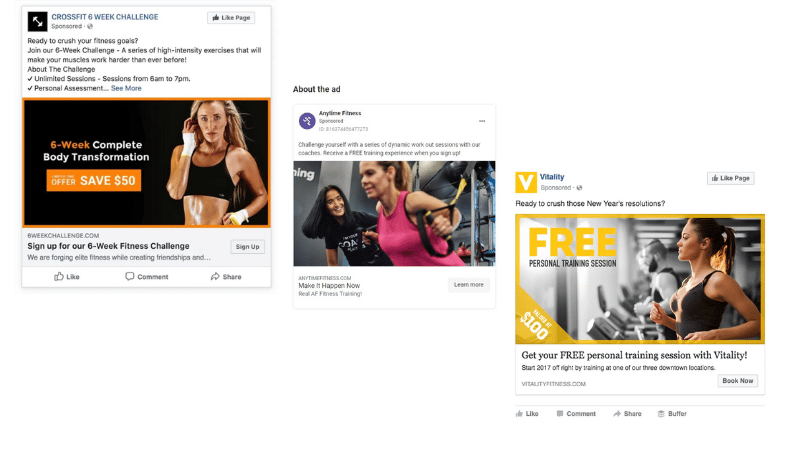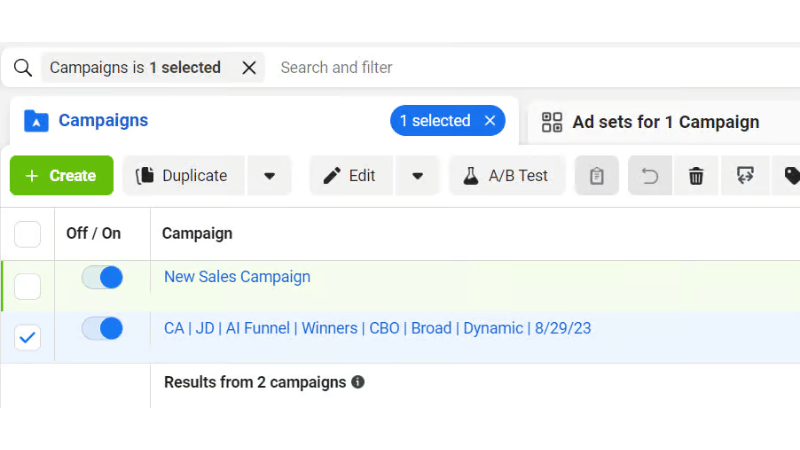As a fitness coach, you know that if you want to get more clients, traditional promotional methods are no longer effective. Facebook ads have become an indispensable tool to reach the right people, with the right needs, at the right time. While in the past, you might have relied on word-of-mouth or organic content, today, Facebook advertising has become an essential tool for fitness coaches to promote their services to clients. That’s why many people are interested in how to run Facebook ads as an online fitness coach (2025) as a strategy for sustainable career growth. However, not everyone knows how to start effectively. Some people pour a large budget into it with no results, while others don’t understand how to optimize the sales funnel and measure ROAS. Therefore, correctly understanding and methodically applying how to run Facebook ads as an online fitness coach (2025) will help you not only attract more potential students but also build a strong personal brand and create a stable, long-term income stream.
Before we get into the steps for advertising on Facebook for coaches, I need you to understand the core mindset of Facebook advertising.
Core mindset of Facebook advertising
Paid advertising offers a superior advantage because it allows you to precisely control the audience you reach, the scope of your visibility, and your scaling speed. Instead of waiting for customers to find you organically, you can proactively appear in front of them with a message designed to fit their needs. Specifically, advertising helps online fitness coaches escape the “time limits” of free channels. If organic growth requires several months or even a year to build credibility, with ads, you can generate leads in the very first week. This is the difference between slow business growth and a breakthrough to quickly dominate the market.
You can know exactly how much you spend, how many leads you get, and then gradually optimize to get better results. One of the factors that convinces many fitness coaches to invest in advertising is ROAS—the ratio of profit earned to ad spend—which can reach 5–10x if the campaign is designed methodically. To achieve this impressive ROAS, you need 3 core elements: an attractive offer, the right target audience, and compelling ad content. A personalized training program that directly solves a customer’s pain points (e.g., safe weight loss, post-natal body improvement, rapid muscle gain) will make it easy for the viewer to make a decision. Using detailed targeting tools like Facebook Ads or Google Ads helps you deliver your message to the right people who have a need. When an ad appears at the right time, to the right audience, and is linked to the right solution, the conversion rate will increase sharply, leading to a high ROAS.
Creative content in Facebook advertising
You can have a methodical marketing funnel, target the right audience, or have a large budget, but if your ad images and videos aren’t captivating enough, users will scroll past without taking any action. This is especially true for online fitness coaches, where visual and emotional factors directly influence the purchase decision, making investment in creative content even more crucial.
Image vs. Video ads – Which is more effective?

Both images and videos have their own advantages and are effective if used in the right context. Image ads are often simpler, easier to launch, and cost less. A clear image with a short but impactful message that hits a need can make a viewer stop and click. Especially for promotions or short-term messages, images often deliver quick results.
In contrast, video ads can convey more information and emotion. A short 30–60 second video can combine sound, visuals, motion, and a strong call to action. In the fitness coaching field, video also helps you showcase your personal credibility, coaching skills, and the actual results of your clients. Therefore, if you want to build a sustainable brand and a deep connection with your clients, video often delivers superior results compared to a simple image. If you’re having trouble launching Facebook video ads, check out the articles on our blog. They will help you develop an attractive mindset when creating Facebook ad videos.
High-performing ad image formats
When using image ads, you can’t just choose them randomly; you need a strategy. Some image formats that often bring high results include:
- Before & After: Images of clients’ body transformations through training often create a powerful visual effect, which helps viewers build trust.
- Lifestyle: Images of the coach or clients in an inspiring training environment, suggesting a healthy lifestyle.
- Prominent Offers: Banners with contrasting colors and short text like “30% Off This Month” easily grab attention and stimulate immediate action.
- Personalized Images: Photos of the coach themselves, combined with a smile and direct eye contact, help create a sense of closeness and increase credibility.
These images not only need to be beautiful but also must match the message and the target audience. An impressive image that is not relevant to the product or service will not lead to real conversions.
Prerequisites before running ads
For a campaign to be truly effective, you need to build a solid foundation, create a free organic presence, and clearly define your potential customers. These are the three important pillars that will help you optimize costs, increase your conversion rate, and build a sustainable personal brand.
The importance of the foundation
For an online fitness coach, the foundation here is not just your website, Fanpage, or social channels, but also the credibility and trust you have built with the community. When customers see that you have valuable content, share practical knowledge, and provide a quality coaching experience, they will be more likely to trust you and make a purchase decision. If you lack a foundation, an ad campaign, even with a large budget, will struggle to bring in long-term revenue. This is because today’s customers often do their research and check for credibility before signing up for any course or training program. Therefore, you need to take the time to build your personal brand and create trustworthy touchpoints before you even think about spending money on ads.
A free organic presence
Regularly posting content on platforms like Facebook, Instagram, TikTok, or YouTube will help you reach potential customers for free, serving as “social proof” to reinforce trust. For example, an online fitness coach who consistently shares videos of workout instructions, nutrition knowledge, or a client’s transformation journey will more easily build credibility. When customers see that you have a lot of useful content, they will feel the value before they have to pay. As a result, when an ad appears, they are more likely to be interested and ready to engage. Additionally, a free organic presence also helps you reduce the pressure on your ad budget. Instead of relying entirely on paid traffic, you can leverage your existing community to create a viral effect. This is a smart way to build a stable customer ecosystem, saving costs and creating long-term credibility.
Correctly identify your potential customers
Many online fitness coaches target their ads too broadly, leading to them reaching people who are not truly interested in their services. This both wastes the budget and results in a low conversion rate. To avoid this mistake, you need to create an Ideal Customer Profile (ICP). This profile includes age, gender, income, interests, lifestyle habits, and health or fitness goals. For example, a potential customer could be a woman aged 25–35, a corporate employee who wants to lose weight and improve her health. With such specific information, you can create ad content and messages that are relevant and directly address their real needs. When you understand who is most likely to make a purchase decision, you will know how to focus your budget on a quality group of customers, instead of scattering it widely and ineffectively.
Guide to run Facebook ads as an online fitness coach (2025)
In 2025, Facebook advertising continues to be a leading marketing channel that helps online fitness coaches reach new students and build a personal brand. However, running effective ads isn’t just about clicking a button to create an ad; it requires you to have a clear, creative strategy and know how to measure results. To succeed, you need to focus on four key elements: using a Launch Doc, optimizing your sales funnel, creating engaging content, and closely tracking your ROAS.

Use a Launch Doc
A Launch Doc can be considered a “map” that helps you launch your ad campaign systematically. This is where you outline your entire idea, from the objective and ideal customer profile to the main message, budget, and timeline. With a clear Launch Doc, you will avoid running ads on a whim or repeating mistakes. Instead of simply writing “run ads to get new students,” the Launch Doc will help you specify: target women aged 25–35 who want to lose 5–10kg and are often online in the evening; the main message is “safe at-home fat loss with a personal coach.” In this way, every step of your ad launch will become focused and well-directed.
Optimize the sales funnel
The sales funnel here isn’t just ad → landing page → sign-up, but needs to be designed to guide customers through multiple stages: awareness, interest, trust, and action. An online fitness coach can create a content sequence starting with an attention-grabbing ad (a video sharing workout knowledge, e.g., “5 mistakes that are preventing you from losing weight”), then lead to a landing page offering a free eBook, continue nurturing with email or messages, and only then offer a coaching package. This process is longer, but the conversion rate will be much higher than a direct “sales pitch” from the start.
Create compelling headlines, content, and CTAs
Headlines and content are crucial “weapons” in Facebook advertising. According to David Ogilvy, 80% of an ad’s success comes from the headline. A strong headline needs to be short, intriguing, and address a problem the customer cares about. For example:
- “Why can’t you lose weight even with regular gym workouts?”
- “3 simple steps for new moms to get their bodies back in 8 weeks.”
The ad content should dig into the customer’s pain points and desires, but it shouldn’t stop there. You need to paint a picture of the desired outcome—a healthy body, the confidence to wear certain clothes, or recognition from friends and family. It’s the contrast between the present and the desire that will motivate the customer to act. The call to action (CTA) needs to be clear, concise, and create urgency. Instead of “Sign Up Now,” try “Book your free workout session today—only 5 spots left this week.” The sense of scarcity and direct benefit will significantly increase the conversion rate.
Track ROAS
Running ads without measuring is like walking in the dark. A crucial metric you need to pay attention to is ROAS (Return on Ad Spend). This is the metric that tells you how much revenue each dollar spent on ads brings back.
If you spend 10 million on ads and earn 40 million from new students, your ROAS is 4. This means for every 1 dollar you invest, you get back 4 dollars. The higher the ROAS, the more effective the campaign. Conversely, if your ROAS is low, you need to re-evaluate your target audience, message, or sales funnel.
A small tip is that you should not only rely on the results from the first few days. Track for at least 7–14 days to have a large enough data set, and then gradually optimize: increase the budget for effective ads and pause or edit underperforming ones.
Optimize and scale your campaign
When you have tested many campaigns and succeeded, you’re probably eager to scale your ad campaign. Scaling your Facebook ad campaign for the sports and fitness industry is not difficult. Below, I will suggest some tips for you to optimize and scale your Facebook ads.

The Grace Period (4 Days): After launching, you must not touch the campaign for the first 4 days. This is so that Facebook’s algorithm has enough time to optimize and find the right audience.
Data Analysis and Optimization: After 4 days, you can analyze the results.
- Turn off ineffective ads: If an ad or ad set has a very high CPL, turn it off.
- Push budget to winning ads: When you find a well-performing ad, duplicate that ad set and increase the budget by 5 to 15 times the CPL to scale.
Scaling Methods:
- Duplicate the Adset: Instead of changing the budget on the existing ad set (because this will mess up the algorithm), duplicate it and increase the budget on the new ad set.
- Create Lookalike Audiences: Once you have enough data, use this Facebook feature to find people who are similar to your converting customers.
- Create New Ad Variations: You should never stop testing. Create small variations of your successful ads by changing the headline, image, or CTA to see which one performs better.
Conclusion
How to run Facebook ads as an online fitness coach (2025) is no longer an optional choice but has become a core strategy to grow your personal brand and expand your client base. From using a Launch Doc to shape your message and building an optimized sales funnel, to creating compelling content and tracking your ROAS, all of these are key steps to creating an ad campaign that is both effective and sustainable.